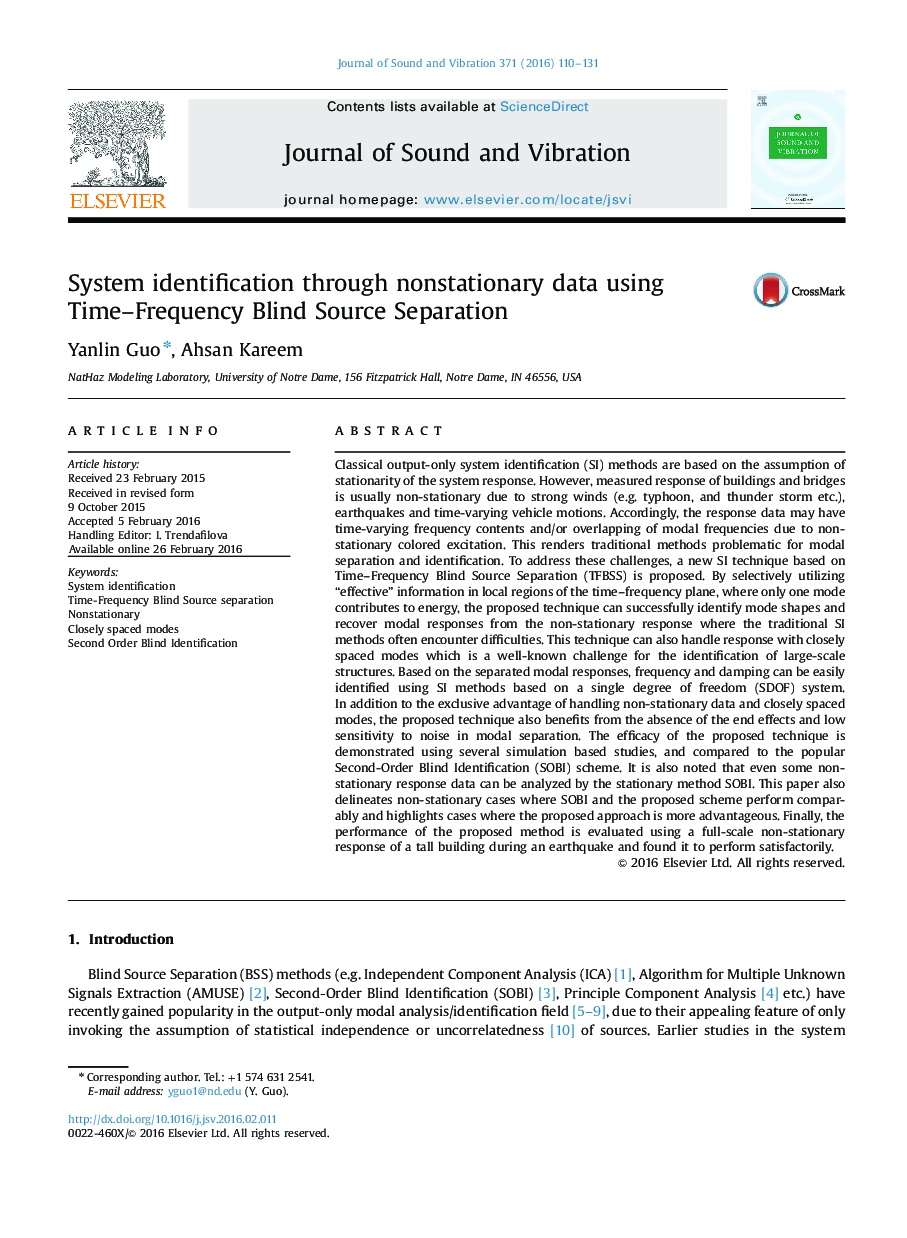| کد مقاله | کد نشریه | سال انتشار | مقاله انگلیسی | نسخه تمام متن |
|---|---|---|---|---|
| 286972 | 509527 | 2016 | 22 صفحه PDF | دانلود رایگان |

Classical output-only system identification (SI) methods are based on the assumption of stationarity of the system response. However, measured response of buildings and bridges is usually non-stationary due to strong winds (e.g. typhoon, and thunder storm etc.), earthquakes and time-varying vehicle motions. Accordingly, the response data may have time-varying frequency contents and/or overlapping of modal frequencies due to non-stationary colored excitation. This renders traditional methods problematic for modal separation and identification. To address these challenges, a new SI technique based on Time–Frequency Blind Source Separation (TFBSS) is proposed. By selectively utilizing “effective” information in local regions of the time–frequency plane, where only one mode contributes to energy, the proposed technique can successfully identify mode shapes and recover modal responses from the non-stationary response where the traditional SI methods often encounter difficulties. This technique can also handle response with closely spaced modes which is a well-known challenge for the identification of large-scale structures. Based on the separated modal responses, frequency and damping can be easily identified using SI methods based on a single degree of freedom (SDOF) system. In addition to the exclusive advantage of handling non-stationary data and closely spaced modes, the proposed technique also benefits from the absence of the end effects and low sensitivity to noise in modal separation. The efficacy of the proposed technique is demonstrated using several simulation based studies, and compared to the popular Second-Order Blind Identification (SOBI) scheme. It is also noted that even some non-stationary response data can be analyzed by the stationary method SOBI. This paper also delineates non-stationary cases where SOBI and the proposed scheme perform comparably and highlights cases where the proposed approach is more advantageous. Finally, the performance of the proposed method is evaluated using a full-scale non-stationary response of a tall building during an earthquake and found it to perform satisfactorily.
Journal: Journal of Sound and Vibration - Volume 371, 9 June 2016, Pages 110–131